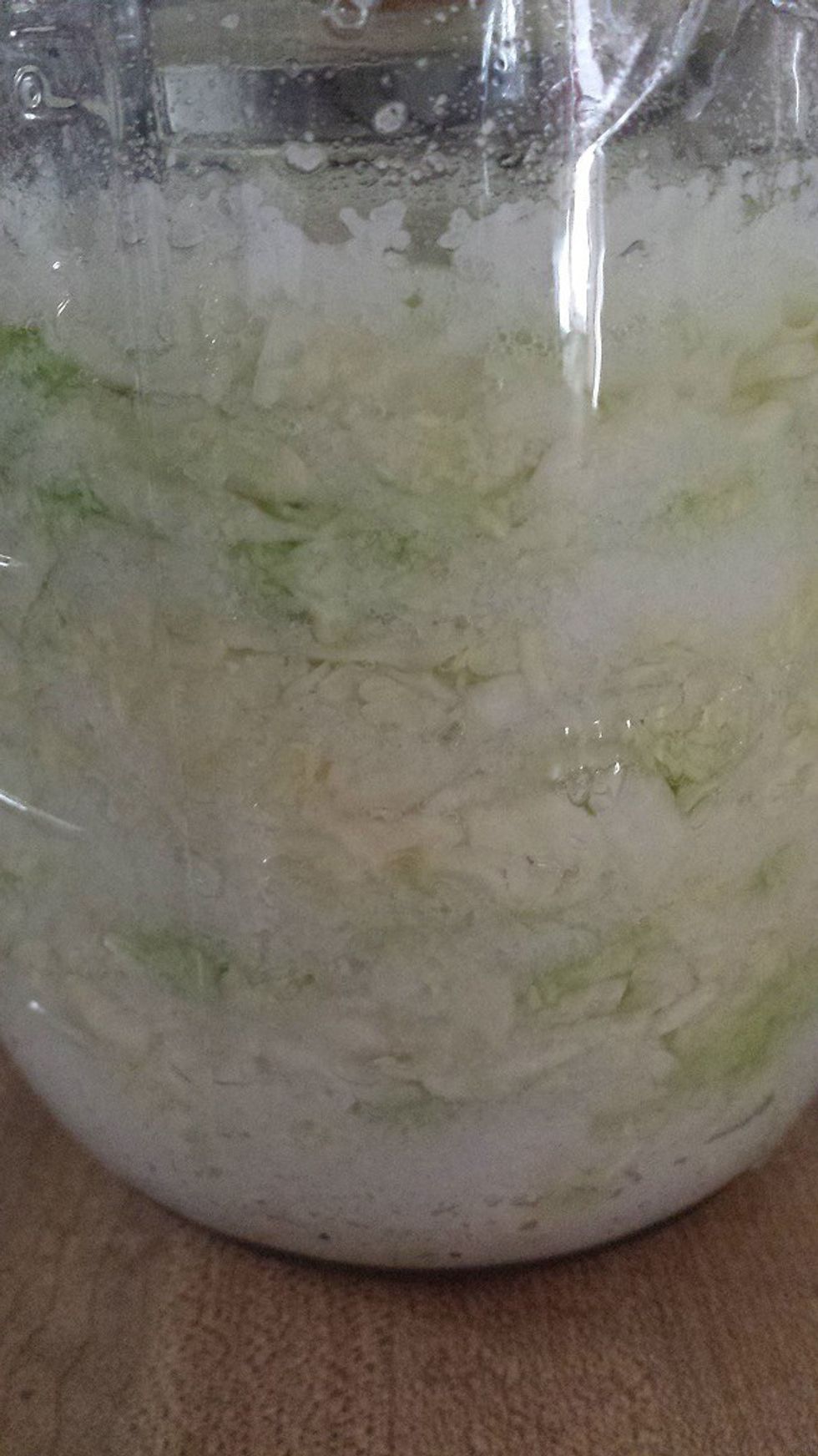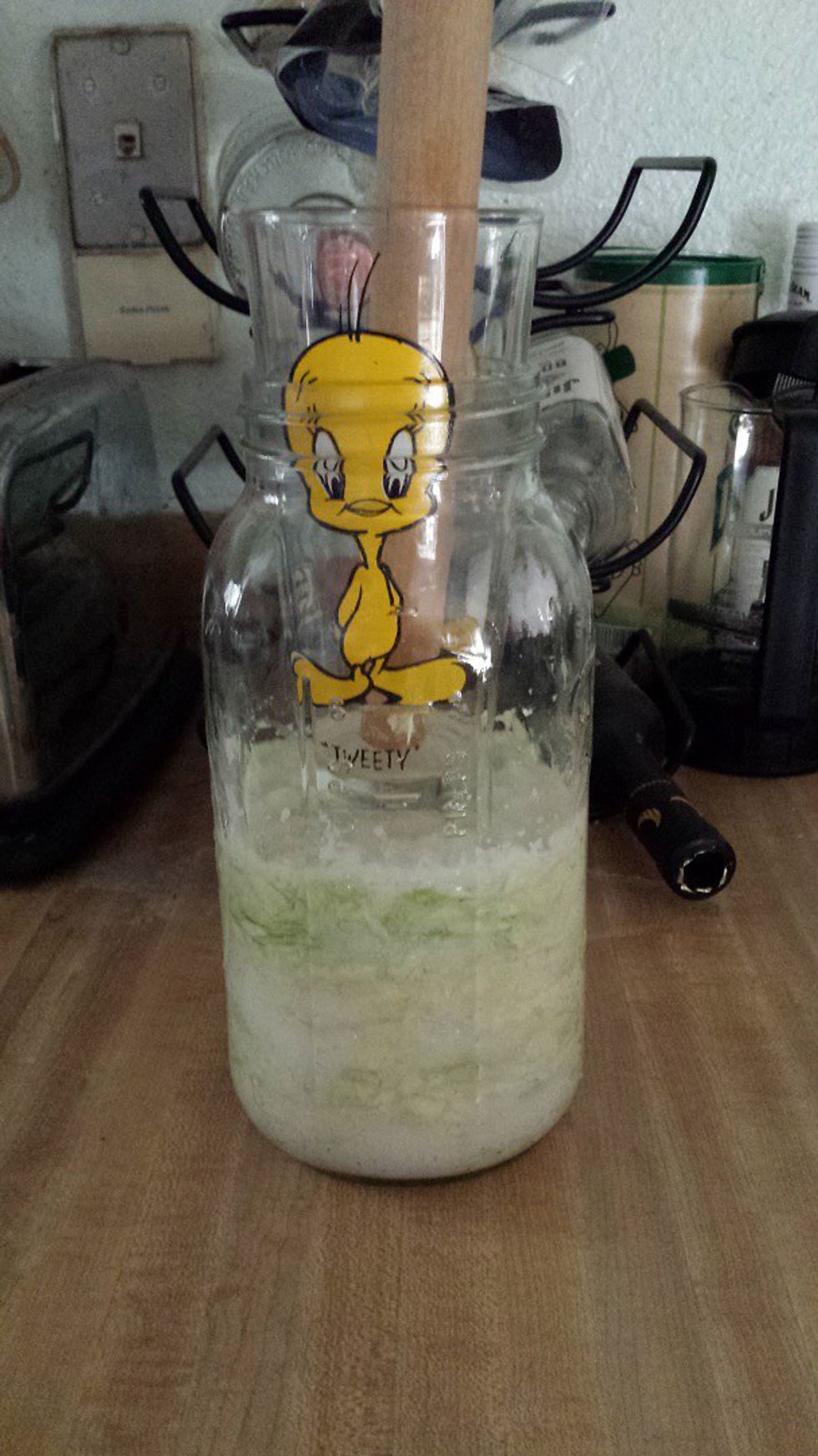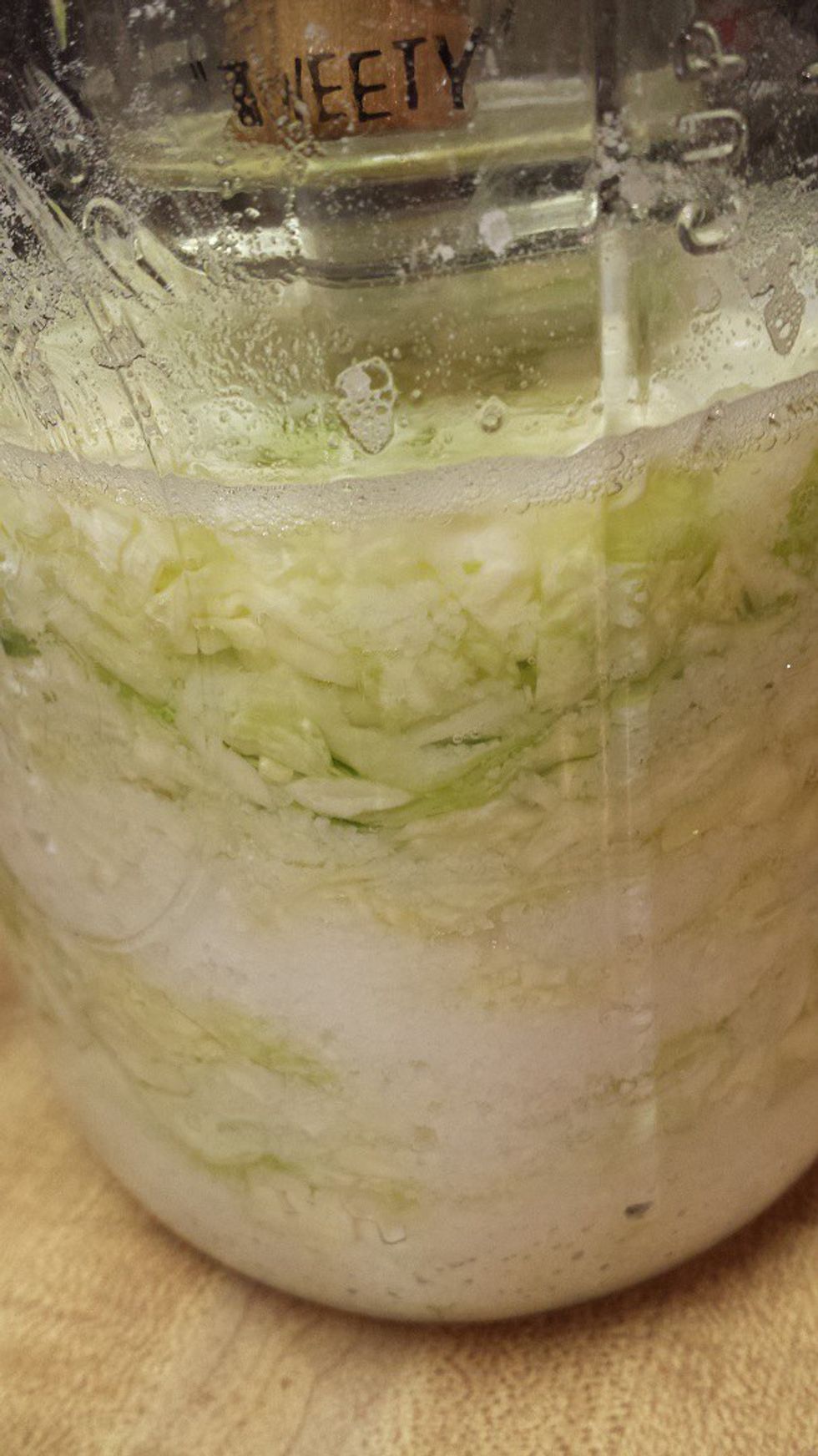Sauerkraut has been around for quite a long time, and is more than just a German thing. Cultures from around the world have had variations of the dish, and it was even taken on boats as a long lasting food that prevents scurvy.
The dish itself is quite the acquired taste. As the name suggests, it is pretty sour, but is also quite salty. Sauerkraut is a fermented food, which is traditionally made from cabbage, and salt that contains ZERO iodide. The iodide will kill off any bacteria and prevent fermentation. Some sauerkraut nowadays is made using vinegar, and is essentially pickled cabbage, not sauerkraut.
Today, sauerkraut that is purchased in supermarkets is usually stabilized and heated, which will kill off any good bacteria that resides in it, because of the Food and Drug Administration. While most of the flavor is still there, processed sauerkraut does not contain the same probiotics that the unprocessed one does. So, why not make some yourself that will taste a million times better, be better for you, and expand your knowledge of fermented foods?
First, you need to pick out a salt. For mine, I used kosher salt. Kosher salt is kind of the middle ground of salts to use. Use whatever you want really, as long as it does not contain anti-caking agents, or iodide, meaning table salt is a no.
As far as cabbage, get one that looks good. You can use green or red cabbage, it's up to you.
For the fermentation vessel, I like to use large mason jars because they are glass and have a nice aesthetic. Pretty much anything glass that is larger than the amount of sauerkraut you want to make is fine.
Now that you have the ingredients, it's time to get cooking. First, wash and rinse everything that will come into contact with the cabbage extremely well. This includes the knife used to chop it up, the container it will ferment in, the cutting board, and whatever else.
Once everything is clean, including your hands, begin by discarding any brown or funky looking leaves from the cabbage.
Next, set the jar you wish to use close by, as well as the salt. Put a thin layer of salt in the jar, and then cut some cabbage into thin strips. Dump the strips into the jar after the salt, and tamp it down using something akin to a rolling pin. After tamping, follow by another thin layer of salt, and more cabbage. Repeat this until you either: A. run out of salt like I did, or B. almost fill up the jar. Be sure to leave at least 3-4 inches of head space in the jar, as the water level will rise as the salt pulls water out of the cabbage. Make sure to end the layers with a layer of salt.
After all that, place something in the jar that will keep pressure on the cabbage, as it won't ferment if the it is out of the solution that is created during. I used a super stylish Tweety bird cup that fit perfectly into the jar. On the first day, you'll want to tamp down the cabbage every like 6 hours or so, making sure all of it is below the solution.
A few hours into the fermentation, you will see small bubbles rising to the surface, and this is normal. During the next few days, you may see a white foam developing, and this is perfectly fine as well. You can remove it if you'd like.
Because this batch is pretty small, it won't take more than 3-4 days to be edible, though, the longer you let it sit, the better it will be. There is really no maximum amount of time for it to ferment, but for sure no less than 3 days. After it is done to your liking, screw on the lid, stick it in the fridge, and eat at your own pace. It will stay good for a few months in the fridge.
*May or may not be a million times better.





















